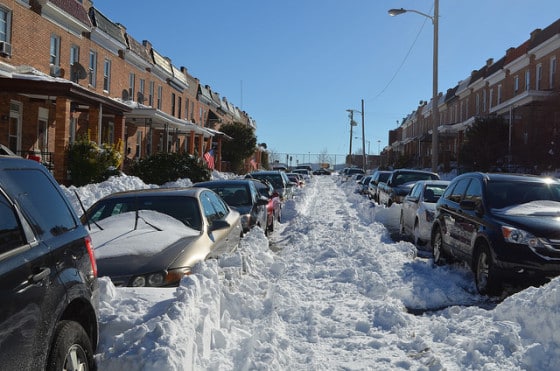
Environmentally-Friendly Ways to Remove Snow and Ice
Keeping sidewalks and roads free of accumulated ice and snow during the cold winter months is very important, not only for safety reasons, but for transportation purposes. In some communities, property owners have only a limited time to clear fallen snow from the sidewalks, walkways and driveways surrounding their homes or businesses. In many instances, being able to remove snow and ice quickly is a necessity.
Although salt may be the chosen method for many cities, towns, and individuals when it comes to melting snow and ice, it can be quite harmful to the environment. Salt and certain other ice-melting chemicals will often have an adverse effect on pets, local wildlife and the property you’ve worked so hard to maintain. These products are capable of causing corrosion to metal, rashes, irritation and dryness to paws and skin, as well as inflammation and stomach pain when mistakenly digested. Salt tends to accumulate in nearby run-offs and streams. Larger concentrations can be poisonous.
Finding more environmentally-friendly alternatives can help protect you, your family, your pets, and the environment. These are a few green ways we have found to melt or aid in the removal of snow and ice:
Coffee Grounds
After brewing your coffee, dry out and save the grounds. During the winter, these grounds can be sprinkled around your driveways and along sidewalks to help melt the melt. Instead of using chemical compounds, the coffee grounds will begin to absorb the sunlight (even when the clouds are out) and you will soon see the ice and snow start to melt. Coffee grounds won’t harm your lawn or garden either.
Sand, Wood Chips or Birdseed
Taking sand, wood chips or birdseed and scattering it over the top of the snow or ice won’t necessarily melt it, but it will provide increased traction. None of these are particularly harmful to the environment and should be used sparingly.
Pickle or Cheese Brine
In the past, beet juice has been touted as a green snow-melting alternative. While this can be beneficial, we have found a few other methods too. A few years ago, National Geographic reported the Pennsylvania Department of Transportation was using a pickle brine and beet juice mixture to help prevent snow and ice from bonding with the pavement on city streets. New jersey opted for straight up pickle brine, as opposed to traditional rock salt and Wisconsin decided to put cheese brine (normally a farm waste product) on the roads to make snow- and ice-removal easier.
Alfalfa Meal
Alfalfa meal is a natural fertilizer, which has made it popular in the past for helping clear icy roads and improve vehicle traction. It can cause algae bloom in local waterways following runoff, but it is less harmful and more effective than other methods like urea.
Elbow Grease
Shoveling with your own two hands after a storm is one of the most effective and environmentally-friendly methods of snow removal. Grabbing a shovel and getting to work can be good exercise and it gets the snow out of the way fast. Those who are unable to shovel their own snow, may want to consider asking for help from neighbors or paying someone to do it for them.
Please keep in mind, ingesting or eating fallen snow or ice is not advised. Even though it may look appealing, a recent study featured in Newsweek revealed snow is full of toxins.




Post a comment